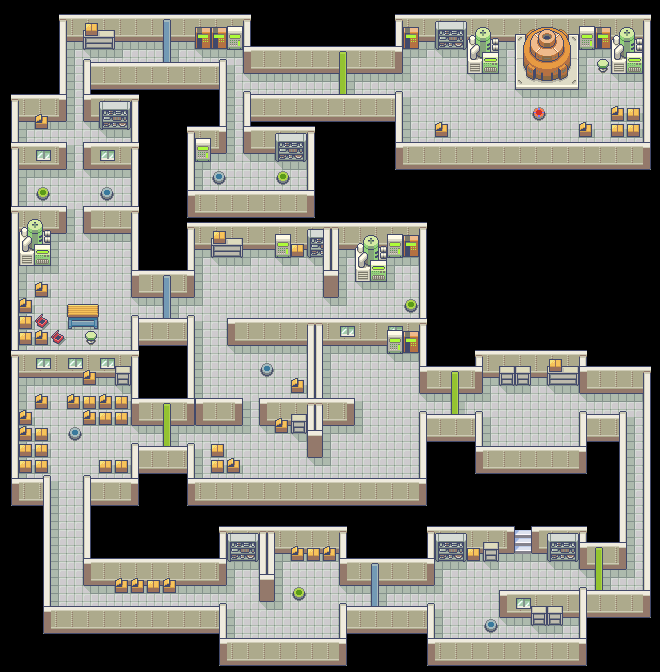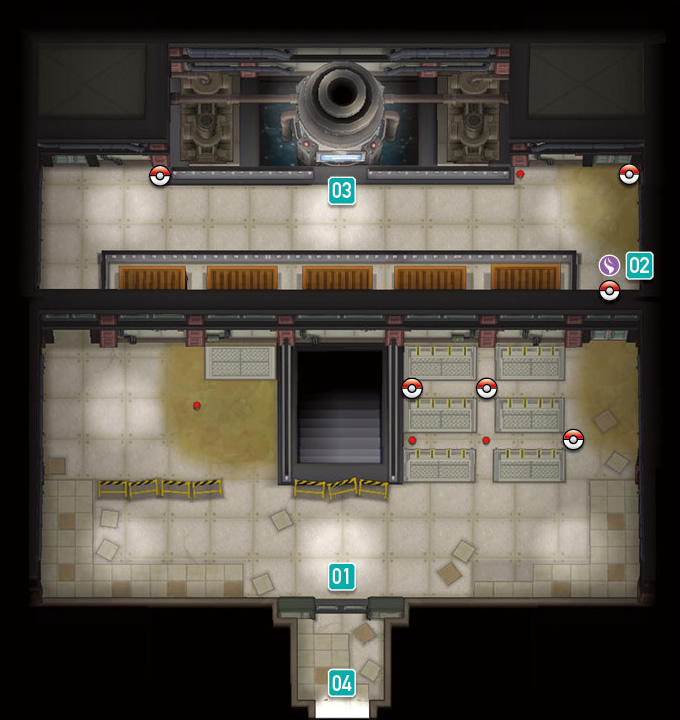In the third generation of Pokémon games, and in their remakes inside the Hoenn region, New Mauville is a well-known late-game location, physically situated in the underground below Mauville City, where the player is tasked by the gym leader Watson to shut down the faulty electrical generator inside. But, at least in the legacy it left to us dreamer gamers, it is much more than that.

Also known as ニューキンセツ, New Kinsetsu in Japanese, or Ciclanova in Italian — as opposed to Ciclamipoli, Mauville City, which is in my opinion a much better and less confusing naming scheme, now that a renewed Mauville City exists thanks to the remakes, and so "New Mauville" risks being misleading — this is a place in the game which, to this day, I feel has some sort of unique mystique that no other location in Pokémon perfectly replicates; one that mixes a light ominous fear with imagination for a bright future that never ended up being.
The location
As said, New Mauville is an underground area located below of Mauville City, and its positioning is peculiar to say the least. It's there, but kinda hidden, with its entrance being just a small grotto, on a small island to the east of the top end of the Seaside Cycling Road. At least in the GBA games, it's barely visible by cycling on there, but in any case it's only accessible by surfing on the enclosed water area near the north gate of the cycling road.

Curious players might, as the game designers clearly intended, notice the area some time before they are not only actually intended to go there, but able to at all, since it's closed off, first requiring Watson to give the player the Basement Key in the GBA games, and to upload the player's eye scan to the digital gate system in the remakes (I guess they decided to remodern the place with new tech in the new decade, even though the place is still abandoned).
The lore
While still pretty much shrouded in mystery, New Mauville has at least some good clear lore about what it was meant to be — albeit, we don't know if because of actual lore details, or because the developers scrapped what was their original idea. From what we're told, informations scattered between all the Hoenn games and the manga, it was meant to be an hi-tech underground city, going 69 levels down, something that could host an incredible amount of people and activities. However, the project was shut down because it would have destroyed the native habitat of so many wild Pokémons.

The only thing remained after the abandonment of the project was the electrical generation system, constructed at the base level; not really clear to me if only to help with construction, or with the intent of providing electricity to the entire future town, since the location seems kind of strange to me, so near the entrance, but I guess that entrance was at the same time meant to be just a service one, not for public access.
The design
In the form which the games actually present to us, the place's design is what actually makes it shine. The dusty objects around immediately confirm the abandonment of the place on first impression, while the maze-like structure surprises explorers going forward (just like the Electric-type monsters inhabiting the place do, but those are more nerve-wracking). However, there are pretty major differences in this between the original games and the remakes, apart from the entrance security.
On the GBA, the place feels half way between an evil team hideout, a warehouse, and obviously the work site that it had been. It's full of boxes and technical items around, and not only is it by itself structured like a labyrinth, but with all the floor-activated doors of alternate colors (in classic RPG Pokémon puzzle fashion) it feels like you need an engineering degree just to navigate the place. It perfectly combines a feeling of modernity with one of broken dreams.

In the 3DS games, New Mauville got completely redesigned, with the electrical generator itself now being controlled by a computer system, and feeling overall more ominous, but probably also less engaging. While the place now appears visually more run-down, with paper or plastic sheets scattered all around the floor, itself all dusty and in some spots also untiled, showing dirt... the labyrinth aspect got severely cut down, changing a big explorable area for just a few steps or path. There are still various items around to pick-up, but there's less to go back to.

Clearly, I prefer the original version of the map, with just plain more content and what is in my opinion a more interesting aesthetic, but the remake has its charm too. The locked doors and blocked down stairs, while being frustrating — in that they seemingly promise things that, ask the Internet for confirmation, just aren't at all programmed in the games,1 as opposed to the honesty of a plain wall — allow us to imagine even more, whereas the perfectly delimitated original dungeon forbids us.
The legacy
The open-ended nature of New Mauville, just like other unique places in the Pokémon franchise — if not videogames in general, really — birthed a special interest in players, trying to explore its meaning and legacy trough theories, discussions, and also some fan-fictions2, not to mention how many hack ROMs have expanded on the lore or the area itself! And, honestly, this is what the mystique is all about: going further than the immediate experience provided by screen and keys (and music), and creating more. So, if you ever feel tired by the Casino, maybe go down to New Mauville and complete your Pokedex, or something!
References:
- https://bulbapedia.bulbagarden.net/wiki/New_Mauville
- https://wiki.pokemoncentral.it/Ciclanova
- New Mauville Side-Quest: https://oraswiki.com/extras-side-quests/new-mauville/
- New Mauville is really mysterious.. https://www.reddit.com/r/pokemon/comments/2nmkh8/new_mauville_is_really_mysterious/
-
How do you get downstairs in New Mauville? https://gaming.stackexchange.com/questions/199073/how-do-you-get-downstairs-in-new-mauville ↩︎
-
New Mauville: The Lower Levels: https://aminoapps.com/c/pokemon/page/blog/new-mauville-the-lower-levels/Bjhw_u5op44a4K7GE2oVBWpEdPMjeM ↩︎



Comments